
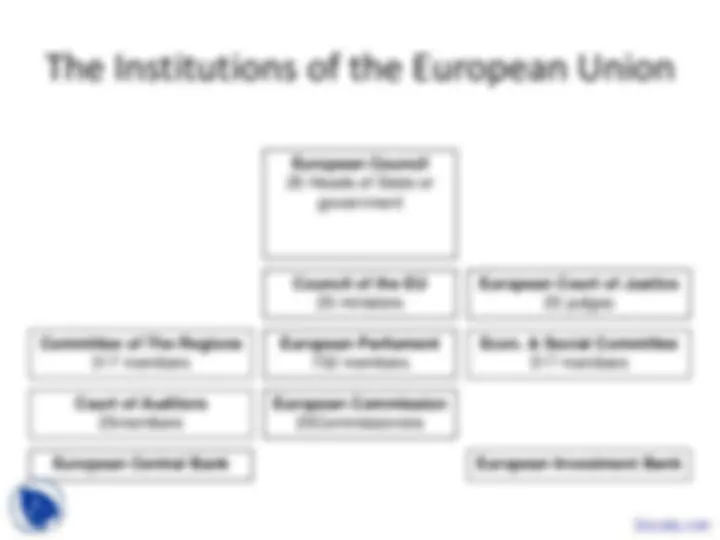
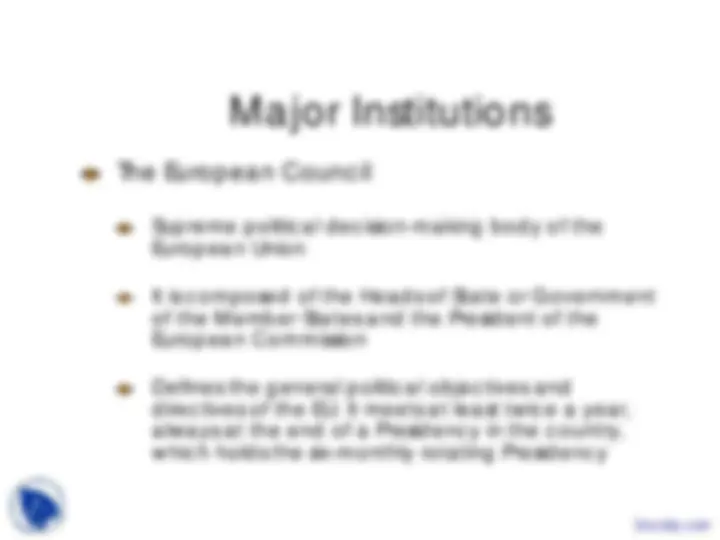
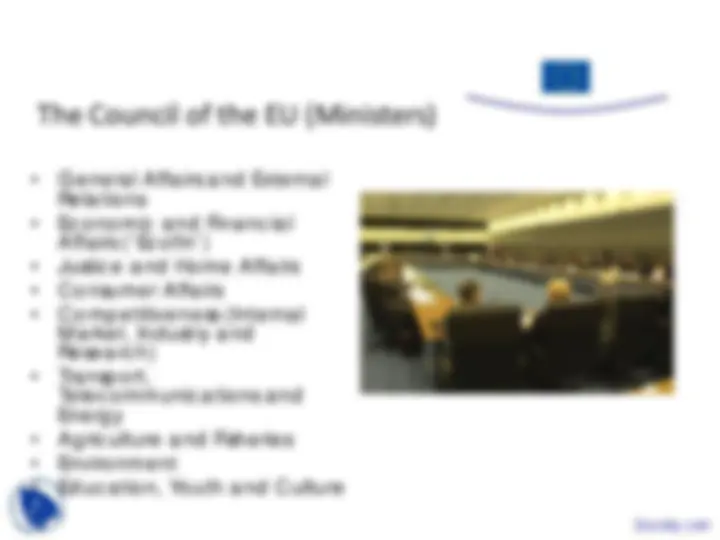
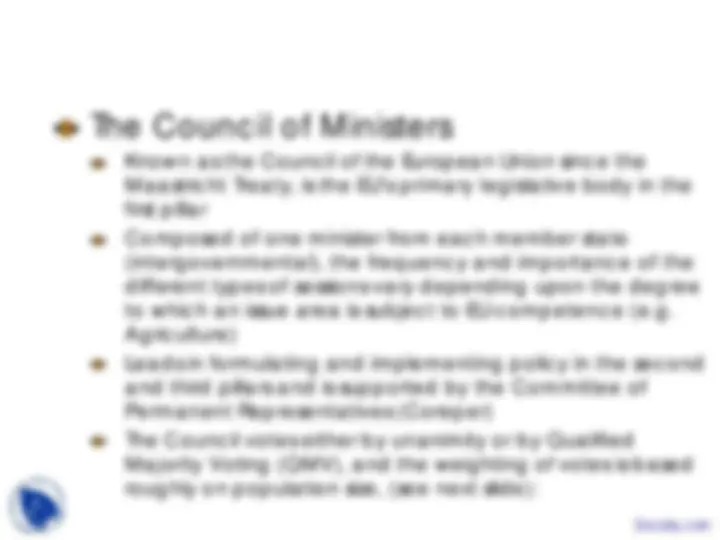
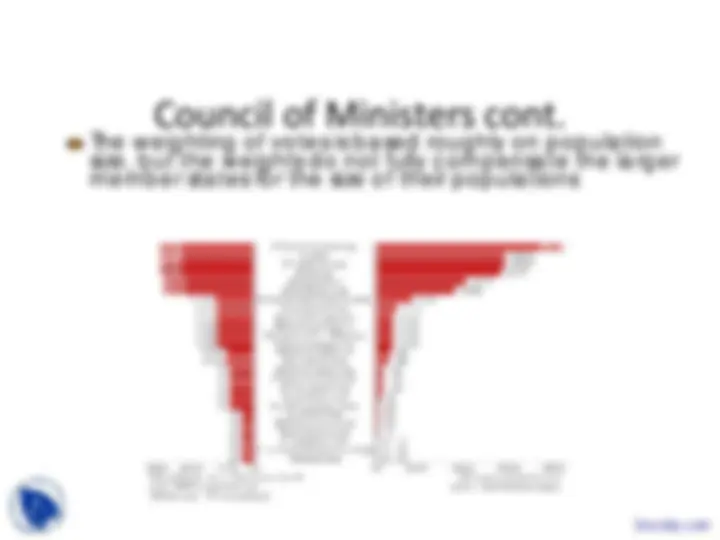

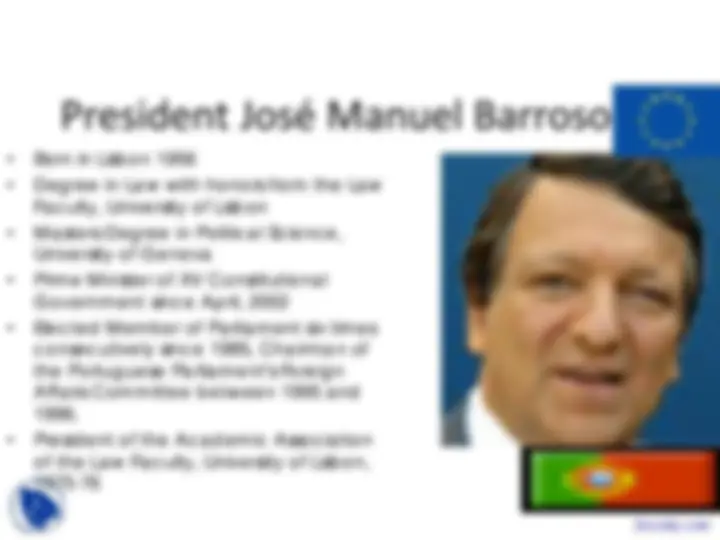

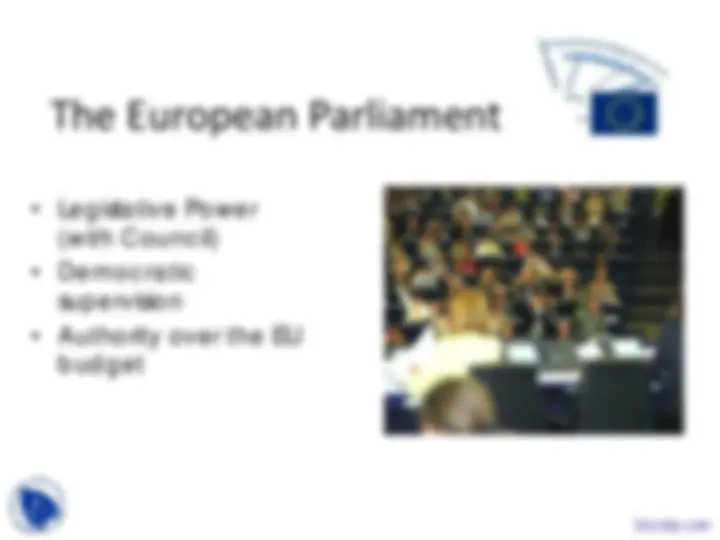
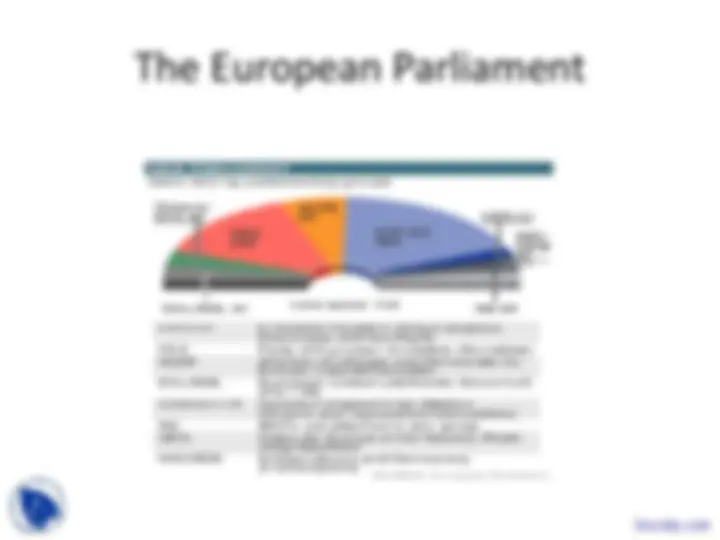
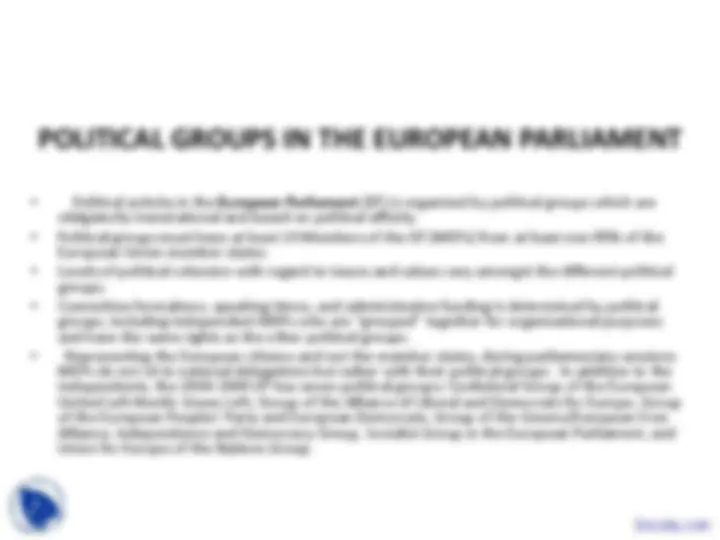
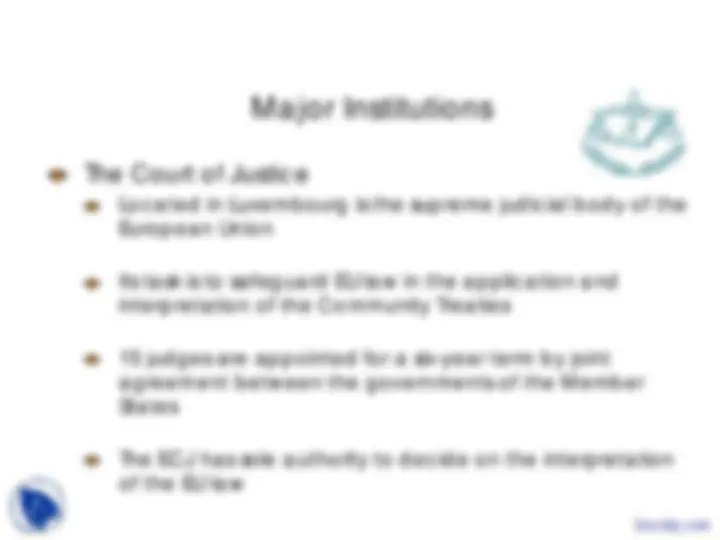
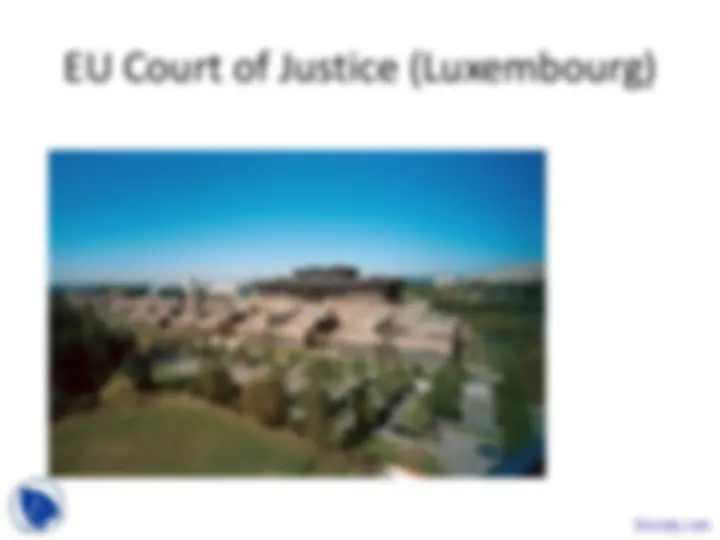
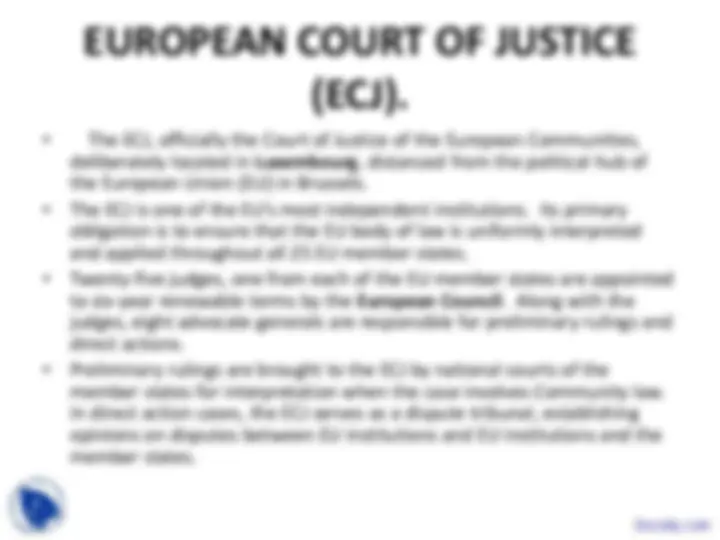
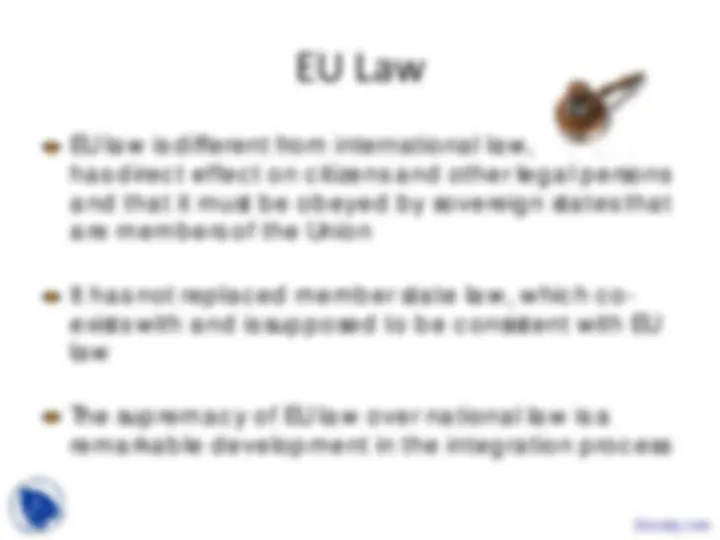
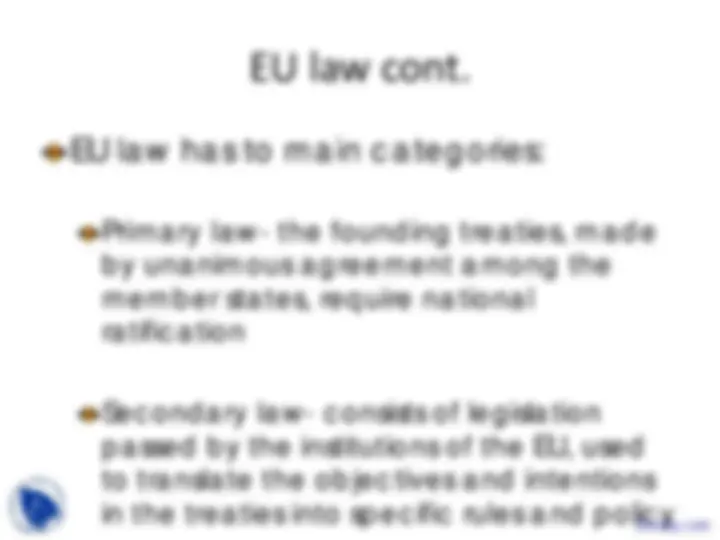
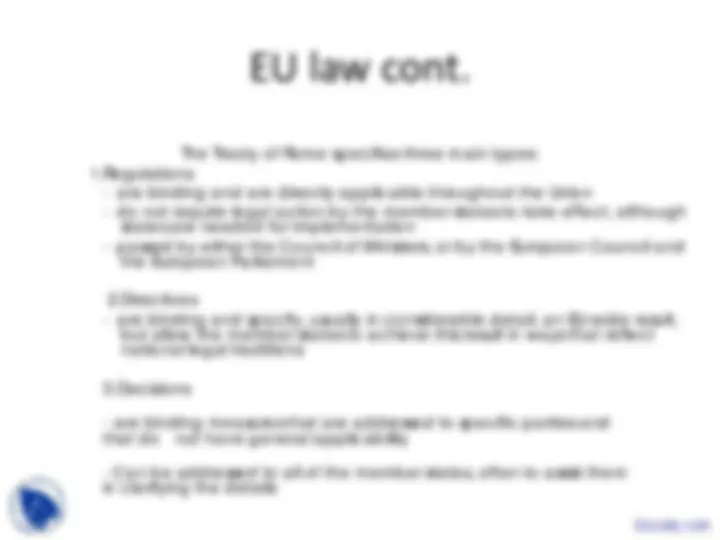
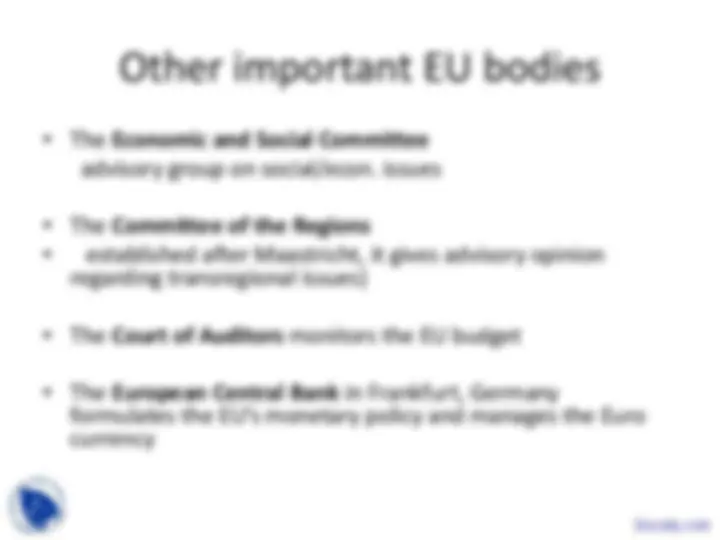

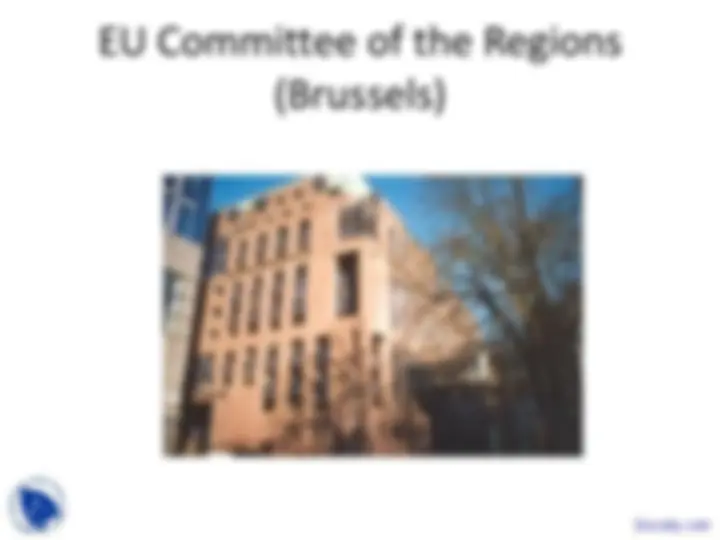
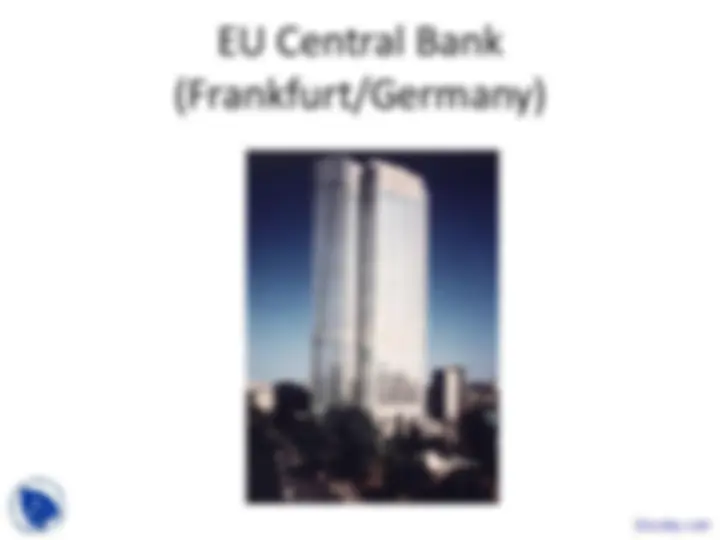

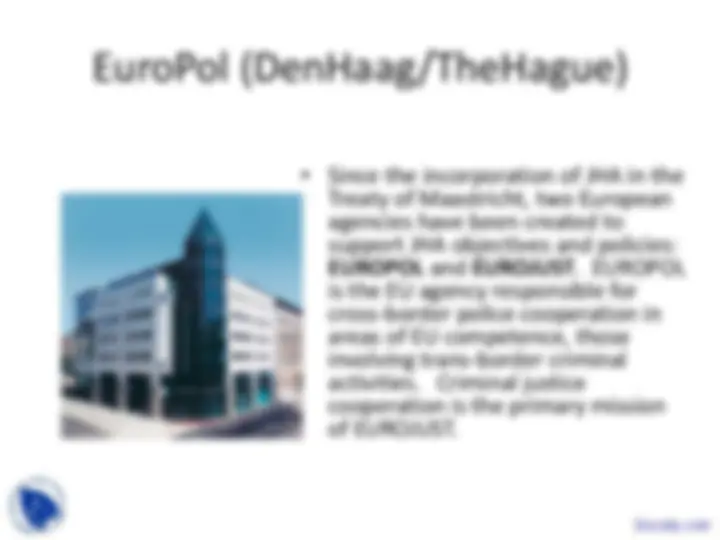
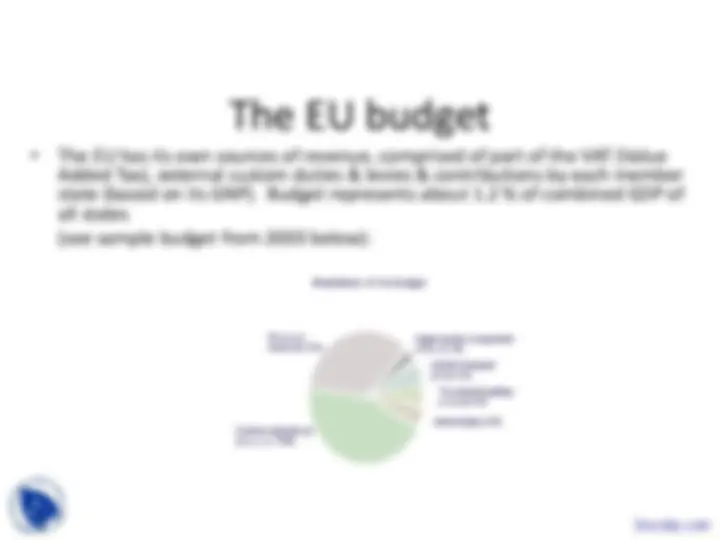

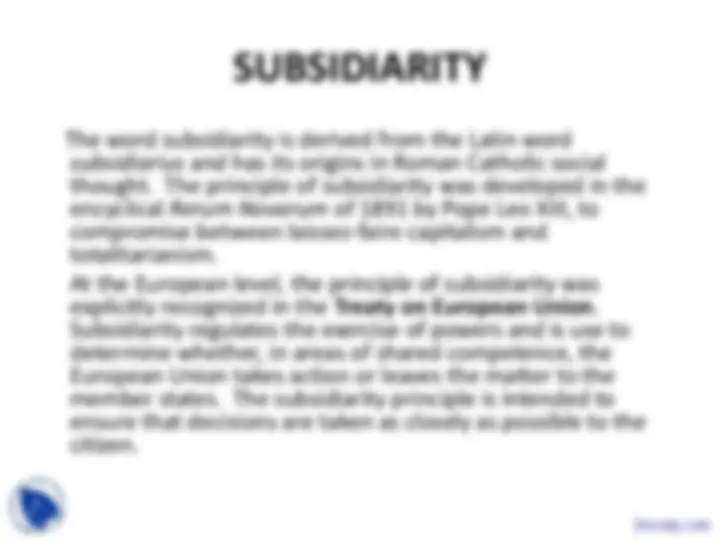

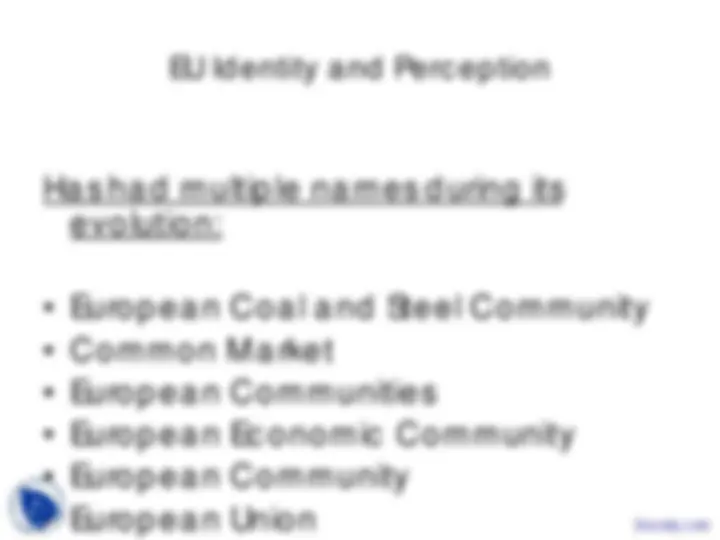
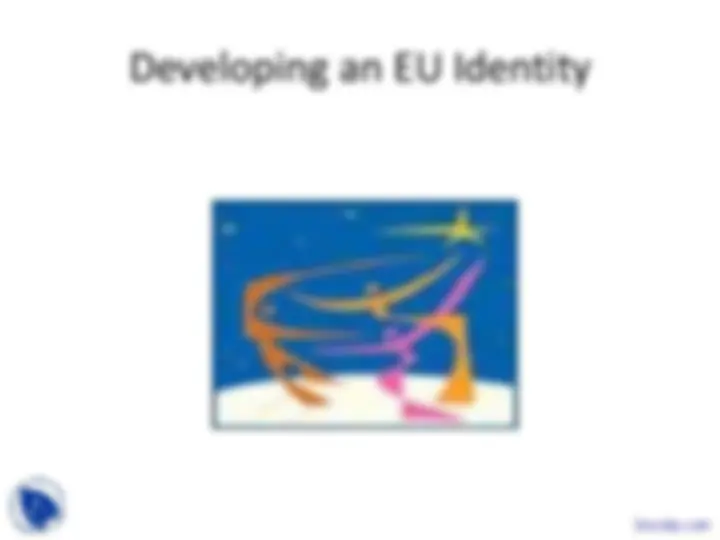











Study with the several resources on Docsity

Earn points by helping other students or get them with a premium plan


Prepare for your exams
Study with the several resources on Docsity

Earn points to download
Earn points by helping other students or get them with a premium plan
Community
Ask the community for help and clear up your study doubts
Discover the best universities in your country according to Docsity users
Free resources
Download our free guides on studying techniques, anxiety management strategies, and thesis advice from Docsity tutors
An overview of the european union (eu), focusing on its institutions, major bodies, and laws. It covers the european council, council of the eu, european parliament, european commission, european court of justice, and other important eu bodies. The roles, functions, and relationships between these institutions, as well as the principles of subsidiarity and eu law. It also touches upon the eu's history and identity.
Typology: Slides
1 / 46

This page cannot be seen from the preview
Don't miss anything!







































Unit 3
Docsity.com
Docsity.com
Major Institutions
Supreme political decision-making body of the European Union
It is composed of the Heads of State or Government of the Member States and the President of the European Commission
Defines the general political objectives and directives of the EU. It meets at least twice a year, always at the end of a Presidency in the country, which holds the six-monthly rotating Presidency
Docsity.com
The Council of the EU (Ministers)
II. The Institutions of the European Union Docsity.com
The Council
II. The Institutions of the European Union Docsity.com
The Council of Ministers
Known as the Council of the European Union since the Maastricht Treaty, is the EU’s primary legislative body in the first pillar Composed of one minister from each member state (intergovernmental), the frequency and importance of the different types of sessions vary depending upon the degree to which an issue area is subject to EU competence (e.g. Agriculture) Leads in formulating and implementing policy in the second and third pillars and is supported by the Committee of Permanent Representatives (Coreper) The Council votes either by unanimity or by Qualified Majority Voting (QMV ), and the weighting of votes is based roughly on population size, (see next slide): Docsity.com
COMMITTEE OF PERMANENT REPRESENTATIVES (COREPER).
Docsity.com
Executive body of the EU
Implements and enforces EU policy and proposes legislation in the 1 st^ pillar
Responsible for drawing up the EU budget & for EU administration
Exercises much more limited powers in the second and third pillars
José Manuel Barroso, President of European Commission (2004- present)
Docsity.com
II. The Institutions of the European Union Docsity.com
Enlargement and the European Commission
Docsity.com
Major Institutions
The European Parliament
Since 1979 the citizens of the EU Member States have sent their representatives to the European Parliament by holding direct elections
There are 626 members which has its seat in Strasbourg, are elected for five years in each case. The seating arrangement in the Chamber is defined by party allegiance and not by nationality
Has a consultative opinion (the right to be heard) or the same decision making authority as the Council of Ministers (co- decision) depending on the subject concerned.
Adopts the annual budget with the Council of Ministers and controls its implementation A supervisory body in the sense that it confirms the appointment of the Commission and can even oblige that body to resign
Docsity.com
Plenary Building of the EP in Strasbourg
Building of the EP in Brussels
Administrative Building of the EP in Luxemburg
II. The Institutions of the European Union Docsity.com
POLITICAL GROUPS IN THE EUROPEAN PARLIAMENT
Docsity.com
Major Institutions
Located in Luxembourg is the supreme judicial body of the European Union
Its task is to safeguard EU law in the application and interpretation of the Community Treaties
15 judges are appointed for a six-year term by joint agreement between the governments of the Member States
The ECJ has sole authority to decide on the interpretation of the EU law
Docsity.com